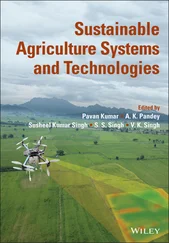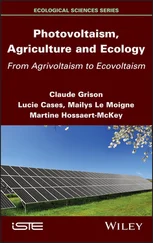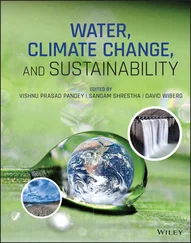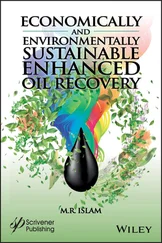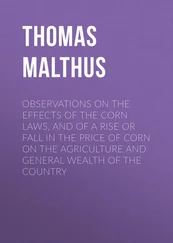1 ...6 7 8 10 11 12 ...21 39 Massalha, H., Korenblum, E., Tholl, D., and Aharoni (2017). Small molecules below‐ground: the role of specialized metabolites in the rhizosphere. Plant J. 90 (4): 788–807.
40 Micallef, S.A., Shiaris, M.P., and Colón‐Carmona, A. (2009). Influence of Arabidopsis thaliana accessions on rhizobacterial communities and natural variation in root exudates. J. Exp. Bot. 60 (6): 1729–1742.
41 Monchgesang, S., Strehmel, N., Schmidt, S. et al. (2016). Natural variation of root exudates in Arabidopsis thaliana‐linking metabolomic and genomic data. Sci. Rep. 6: 29033. https://doi.org/10.1038/srep29033.
42 Neal, A.L., Ahmad, S., Gordon‐Weeks, R., and Ton, J. (2012). Benzoxazinoids in root exudates of maize attracts Pseudomonas putida to the rhizosphere. PLoS One 7: e35498. https://doi.org/10.1371/journal.pone.0035498.
43 Neumann, G., Bott, S., Ohler, M.A. et al. (2014). Root exudation and root development of lettuce (Lactuca sativa L. cv. Tizian) as affected by different soils. Front. Microbiol. 5: 2. https://doi.org/10.3389/fmicb.2014.00002.
44 Oburger, E., Dell Mour, M., Hann, S. et al. (2013). Evaluation of a novel tool for sampling root exudates from soil‐grown plants compared to conventional techniques. Environ. Exp. Bot. 87: 235–247.
45 Oleghe, E., Naveed, M., Baggs, E.M., and Hallett, P.D. (2017). Plant exudates improve the mechanical conditions for root penetration through compacted soils. Plant and Soil 421: 19. https://doi.org/10.1007/s11104‐017‐3424‐5.
46 Olga, C.C., Franzaring, J., Schmid, I. et al. (2017). Atmospheric CO2 enrichment and drought stress modify root exudation of barley. Glob. Chang. Biol. 23: 1292–1304. https://doi.org/10.1111/gcb.13503.
47 Parniske, M. (2008). Arbuscular mycorrhiza: the mother of plant root endosymbioses. Nat. Rev. Microbiol. 6: 763. https://doi.org/10.1038/nrmicro1987.
48 Phillips, R.P., Erlitz, Y., Bier, R., and Bernhardt, E.S. (2008). New approach for capturing soluble root exudates in forest soils. Funct. Ecol. 22: 90–999.
49 Poschenrieder, C., Tolra, R.P., and Barcelo, J. (2005). A role for cyclic hydroxamates in aluminium resistance in maize? J. Inorg. Biochem. 99 (9): 1830–1836.
50 Robin, A., Vansuyt, G., Hinsinger, P. et al. (2008). Iron dynamics in the rhizosphere: consequences for plant health and nutrition. Adv. Agron. 99: 183–225.
51 Schulz‐Bohm, K., Gerards, S., Hundscheid, M. et al. (2018). Calling from distance: attraction of soil bacteria by plant root volatiles. ISME J. 12 (5): 1252–1262.
52 Shen, Y., Strom, L., Jonsson, J.A., and Tyler, G. (1996). Low‐molecular organic acids in the rhizosphere soil solution of beech forest (Fagus sylvatica L.) cambisols determined by ion chromatography using supported liquid membrane enrichment technique. Soil Biol. Biochem. 28: 1163–1169. https://doi.org/10.1016/0038‐0717(96)00119‐8.
53 Smith, W.H. (1970). Root exudates of seedling and mature sugar maple. Phytopathology 60: 701–703. https://doi.org/10.1094/Phyto‐60‐701.
54 Smith, W.H. (1976). Character and significance of forest tree root exudates. Ecology 57: 24–331. https://doi.org/10.2307/1934820.
55 Song, F., Han, X., Zhu, X., and Herbert, S.J. (2012). Response to water stress of soil enzymes and root exudates from drought and non‐drought tolerant corn hybrids at different growth stages. Can. J. Soil Sci. 92: 501–507.
56 Steinauer, K., Chatzinotas, A., and Eisenhauer, N. (2016). Root exudate cocktails: the link between plant diversity and soil microorganisms? Ecol. Evol. 6: 7387–7396.
57 Strehmel, N., Bottcher, C., Schmidt, S., and Scheel, D. (2014). Profiling of secondary metabolites in root exudates of Arabidopsis thaliana. Phytochemistry 108: 35–46.
58 Subbarao, G.V., Nakahara, T., Ishikawa, H. et al. (2013). Biological nitrification inhibition (BNI) activity in sorghum and its characterization. Plant and Soil 366 (1–2): 243–259.
59 Sugiyama, A. (2019). The soybean rhizosphere: metabolites, microbes, and beyond – a review. J. Adv. Res. (In Press) doi: https://doi.org/10.1016/j.jare.2019.03.005.
60 Sun, L., Lu, Y., Yu, F. et al. (2016). Biological nitrification inhibition by rice root exudates and its relationship with nitrogen‐use efficiency. New Phytol. 212 (3): 646–656.
61 Susan, V.F. (2018). Root exudates affect soil stability, water repellency. Sci. Daily 04: 809–1833.
62 Tin, W.W.T., Hayashi, H., Otomatsu, T. et al. (2009). Caprolactam, an inhibitory allelochemical exuded from germinating buckwheat (Fagopyrum esculentum) seeds. Heterocycles 78: 1217–1222. https://doi.org/10.3987/Com‐08‐11601.
63 Tsuno, Y., Teruhisa, F., Keiji, E. et al. (2018). Soyasaponins: a new class of root exudates in soybean (Glycine max). Plant Cell Physiol. 59 (2): 366–375.
64 Tuason, M.M.S. and Arocena, J.M. (2009). Root organic acid exudates and properties of rhizosphere soils of white spruce (Picea glauca) and sub alpine fir (Abieslasiocarpa). Can. J. Soil Sci. 89 (3): 287–300. https://doi.org/10.4141/CJSS08021.
65 Valentinuzzi, F., Cesco, S., Tomasi, N., and Mimmo, T. (2015). Influence of different trap solutions on the determination of root exudates in Lupinusalbus L. Biol. Fertil. Soils 51 (6): 757–765.
66 Verma, A., Kumar, S., Hemansi, G.K. et al. (2018). Rhizosphere metabolite profiling: an opportunity to understand plant‐microbe interactions for crop improvement. In: Crop Improvement Through Microbial Biotechnology, 1e (eds. R. Prasad, S.S. Gill and N. Tuteja), 343–361. Amsterdam: Elsevier.
67 Vives‐Peris, V., Gómez‐Cadenas, A., and Perez‐Clemente, R.M. (2017). Citrus plants exude proline and phytohormones under abiotic stress conditions. Plant Cell Rep. 36 (12): 1971–1984. https://doi.org/10.1007/s00299‐017‐2214‐0.
68 Vives‐Peris, V., Molina, L., Segura, A. et al. (2018). Root exudates from citrus plants subjected to abiotic stress conditions have a positive effect on rhizobacteria. J. Plant Physiol. 228: 208–217. https://doi.org/10.1016/j.jplph.2018.06.003.
69 Vranova, V., Rejsek, K., Skene, K.R. et al. (2013). Methods of collection of plant root exudates in relation to plant metabolism and purpose: a review. J. Plant Nutr. Soil Sci. 176: 175–199.
70 Weston, L.A. and Mathesius, U. (2013). Flavonoids: their structure, biosynthesis and role in the rhizosphere, including allelopathy. J. Chem. Ecol. 39: 283–297.
71 Wouters, F.C., Blanchette, B., Gershenzon, J., and Vassao, D.G. (2016). Plant defence and herbivore counter‐defence: benzoxazinoids and insect herbivores. Phytochem. Rev. 15: 1127–1151. https://doi.org/10.1007/s11101‐016‐9481‐1.
72 Ziegler, J., Schmidt, S., Chutia, R. et al. (2016). Non‐targeted profiling of semi‐polar metabolites in Arabidopsis root exudates uncovers a role for coumarin secretion and lignification during the local response to phosphate limitation. J. Exp. Bot. 67 (5): 1421–1432.
73 Zwetsloot, M.J., Kessler, A., and Bauerle, T.L. (2019). Phenolic root exudate and tissue compounds vary widely among temperate forest tree species and have contrasting effects on soil microbial respiration. New Phytol. 218: 530–541.
2 Phytoproteomics: A New Approach to Decipher Phytomicrobiome Relationships
Prachie Sharma and Kapila Kumar
Manav Rachna International Institute of Research and Studies, Faridabad, Haryana, India
The ecosystem thrives with the dynamism of interactions between abiotic and biotic aspects of life. The ecosystem harbors a wide diversity of species ranging from a plethora of microorganisms to macroorganisms. Every living being is predisposed to an assortment of nutritional as well as environmental requirements. These needs, when catered to by the ecosystem, make the living conducive. The most astounding feature of the ecosystem is that every living being is genetically distinct with unique living requirements yet tend to coexist with communal harmony within the same environment. This harmony is met with a balanced equilibrium of benefit‐sharing among species for sustained and enhanced living.
Читать дальше

